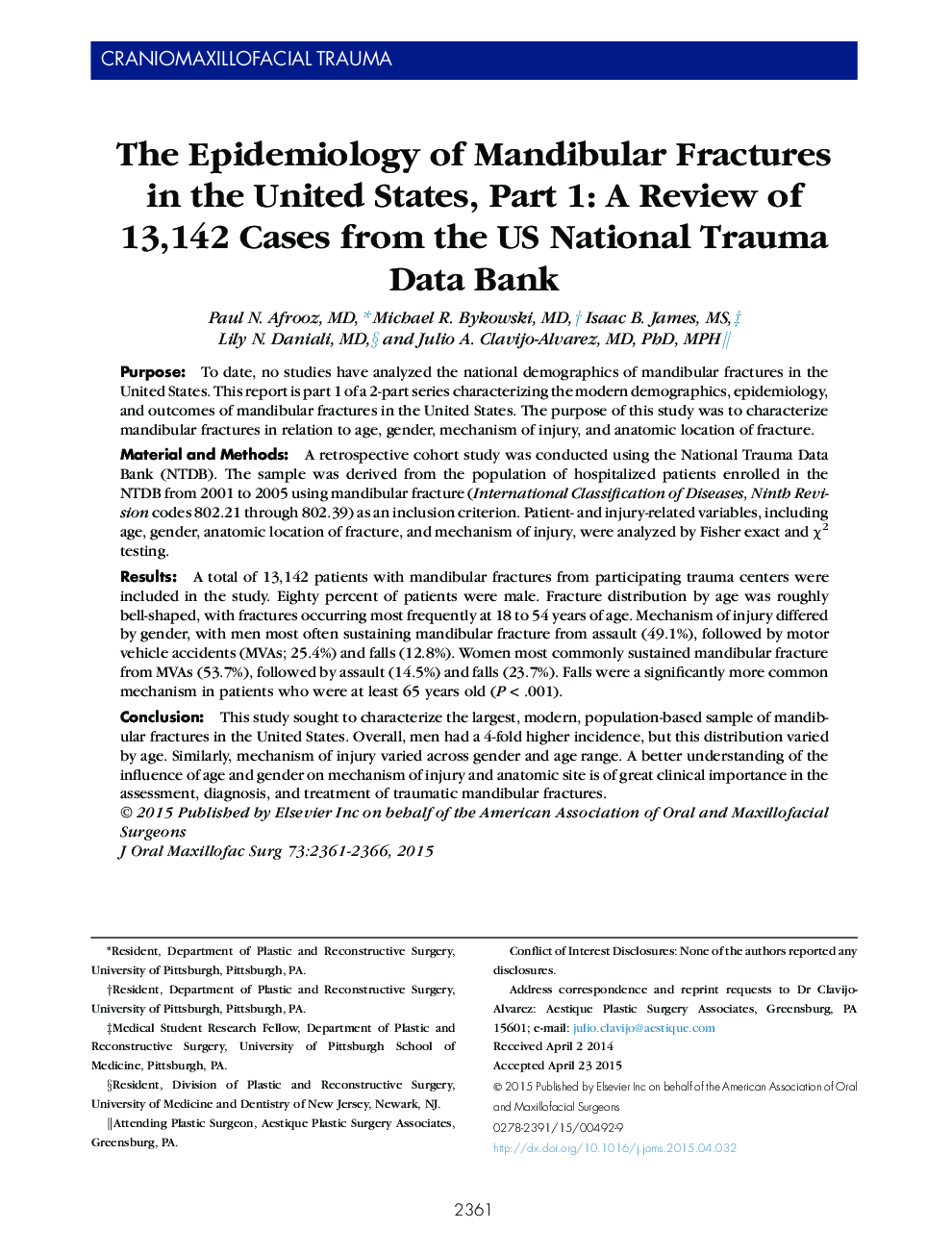| Article ID | Journal | Published Year | Pages | File Type |
|---|---|---|---|---|
| 3153007 | Journal of Oral and Maxillofacial Surgery | 2015 | 6 Pages |
PurposeTo date, no studies have analyzed the national demographics of mandibular fractures in the United States. This report is part 1 of a 2-part series characterizing the modern demographics, epidemiology, and outcomes of mandibular fractures in the United States. The purpose of this study was to characterize mandibular fractures in relation to age, gender, mechanism of injury, and anatomic location of fracture.Material and MethodsA retrospective cohort study was conducted using the National Trauma Data Bank (NTDB). The sample was derived from the population of hospitalized patients enrolled in the NTDB from 2001 to 2005 using mandibular fracture (International Classification of Diseases, Ninth Revision codes 802.21 through 802.39) as an inclusion criterion. Patient- and injury-related variables, including age, gender, anatomic location of fracture, and mechanism of injury, were analyzed by Fisher exact and χ2 testing.ResultsA total of 13,142 patients with mandibular fractures from participating trauma centers were included in the study. Eighty percent of patients were male. Fracture distribution by age was roughly bell-shaped, with fractures occurring most frequently at 18 to 54 years of age. Mechanism of injury differed by gender, with men most often sustaining mandibular fracture from assault (49.1%), followed by motor vehicle accidents (MVAs; 25.4%) and falls (12.8%). Women most commonly sustained mandibular fracture from MVAs (53.7%), followed by assault (14.5%) and falls (23.7%). Falls were a significantly more common mechanism in patients who were at least 65 years old (P < .001).ConclusionThis study sought to characterize the largest, modern, population-based sample of mandibular fractures in the United States. Overall, men had a 4-fold higher incidence, but this distribution varied by age. Similarly, mechanism of injury varied across gender and age range. A better understanding of the influence of age and gender on mechanism of injury and anatomic site is of great clinical importance in the assessment, diagnosis, and treatment of traumatic mandibular fractures.
